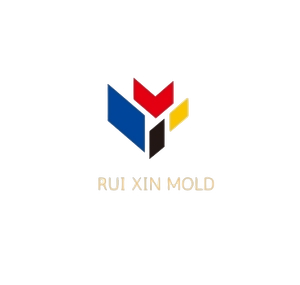- In today’s fast-paced automotive world, manufacturers are constantly seeking ways to produce high-quality, cost-effective parts that meet stringent safety and performance standards. One technology that has revolutionized the industry is injection molding. This versatile manufacturing process has become a cornerstone in producing a wide range of automotive components, from interior trim to under-the-hood parts. Let’s dive into the world of injection molding for automotive parts and explore its benefits, applications, and future trends.

The Basics of Injection Molding in Automotive Manufacturing
Injection molding is a manufacturing process where molten plastic is injected into a mold cavity under high pressure. Once cooled and solidified, the part is ejected, resulting in a finished component ready for use or further processing. This method is particularly well-suited for producing large volumes of identical parts with high precision and consistency.
Key Advantages for the Automotive Industry:
- Cost-Effectiveness: High-volume production reduces per-unit costs.
- Design Flexibility: Complex shapes and intricate details are achievable.
- Material Versatility: A wide range of plastics can be used, including high-performance polymers.
- Weight Reduction: Plastic parts are lighter than metal alternatives, improving fuel efficiency.
- Durability: Modern plastics offer excellent strength-to-weight ratios.
Common Automotive Parts Produced by Injection Molding
The versatility of injection molding allows for the production of numerous automotive components:
- Interior Components:
– Dashboard panels
– Door handles and panels
– Center consoles
– Seat belt components
- Exterior Parts:
– Bumper fascias
– Grilles
– Mirror housings
– Wheel covers
- Under-the-Hood Components:
– Air intake manifolds
– Fluid reservoirs
– Battery trays
– Engine covers
- Lighting Components:
– Headlight housings
– Taillight lenses
– Turn signal assemblies
Materials Used in Automotive Injection Molding
Selecting the right material is crucial for ensuring part performance and longevity. Common plastics used in automotive injection molding include:
– Polypropylene (PP): Widely used for bumpers and interior trim due to its low cost and good chemical resistance.
– Acrylonitrile Butadiene Styrene (ABS): Offers good impact resistance and is often used for dashboard components.
– Polyamide (Nylon): Provides high strength and heat resistance, making it suitable for under-hood applications.
– Polycarbonate (PC): Used in lighting components due to its optical clarity and impact resistance.
– Polyoxymethylene (POM): Offers high stiffness and low friction, making it ideal for gears and bearings.
Challenges and Solutions in Automotive Injection Molding
While injection molding offers numerous benefits, it also presents some challenges:
- Quality Control: Maintaining consistent part quality is crucial. Solution: Implement advanced process monitoring systems and statistical process control.
- Tooling Costs: Initial mold costs can be high. Solution: Utilize rapid tooling techniques for prototyping and low-volume production.
- Material Selection: Balancing performance requirements with cost. Solution: Work closely with material suppliers to develop custom formulations.
- Environmental Concerns: Addressing sustainability issues. Solution: Incorporate recycled materials and design for recyclability.
Innovations in Automotive Injection Molding
The automotive industry is constantly evolving, and so is injection molding technology:
- Multi-Material Molding: Combining different materials in a single part for enhanced functionality.
- Gas-Assisted Injection Molding: Creating hollow sections to reduce weight without compromising strength.
- In-Mold Labeling and Decoration: Integrating graphics and textures directly during the molding process.
- Micro-Molding: Producing extremely small, high-precision components for advanced automotive systems.
The Future of Injection Molding in the Automotive Industry
As the automotive industry shifts towards electric and autonomous vehicles, injection molding will play an even more critical role:
– Lightweighting: Developing new materials and processes to further reduce vehicle weight.
– Integration of Electronics: Molding parts with embedded sensors and circuitry.
– Sustainable Materials: Increasing use of bio-based and recycled plastics.
– Customization: Utilizing flexible molding systems for mass customization of vehicle components.
Conclusion: Driving Forward with Injection Molding
Injection molding has become an indispensable technology in automotive manufacturing, offering a perfect blend of cost-effectiveness, design flexibility, and performance. As vehicles become more advanced and environmentally friendly, injection molding will continue to evolve, meeting the industry’s ever-changing demands.
By embracing innovations in materials, processes, and design, automotive manufacturers can leverage injection molding to create safer, more efficient, and more sustainable vehicles. As we look to the future of transportation, one thing is clear: injection molding will remain in the driver’s seat of automotive innovation.
Are you ready to explore how injection molding can revolutionize your automotive parts production? Contact us today to discuss your project and discover how we can help you stay ahead in the fast-paced world of automotive manufacturing. contact us:www.dgruixinmold.com
